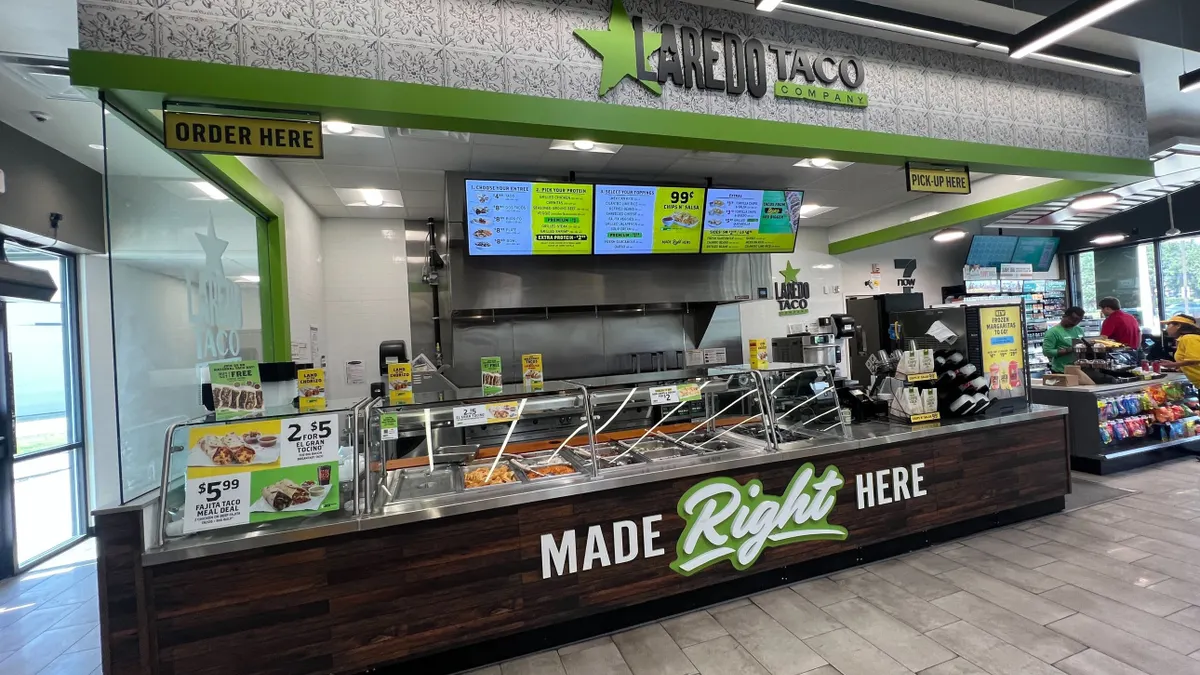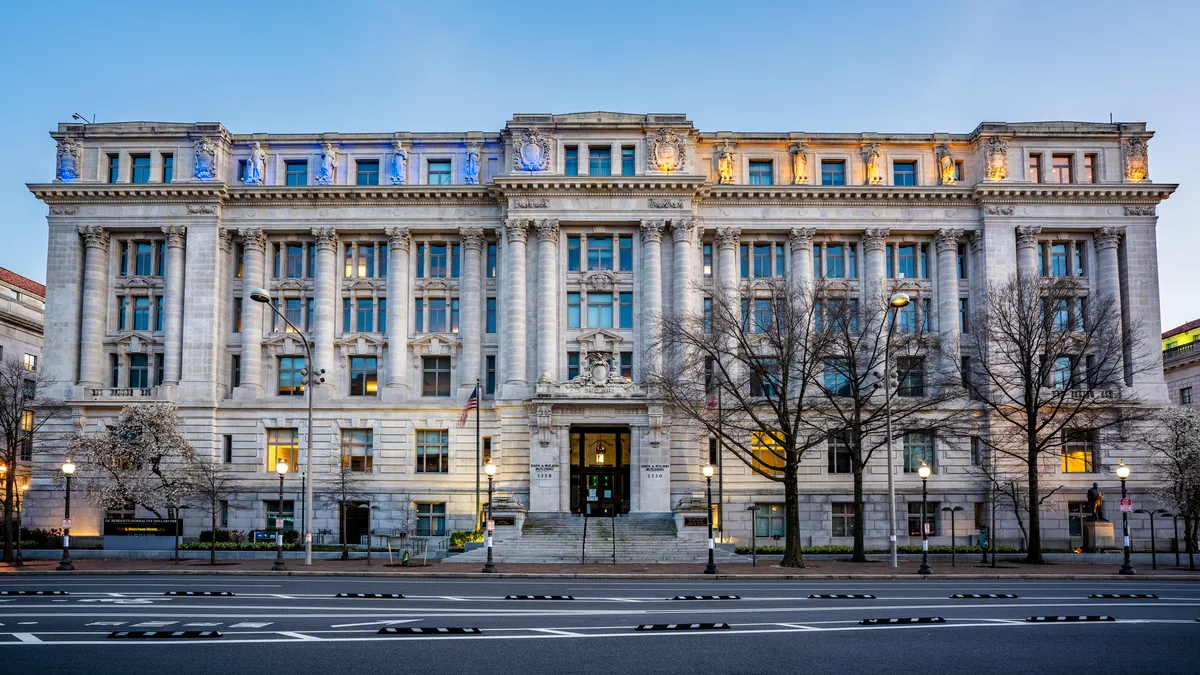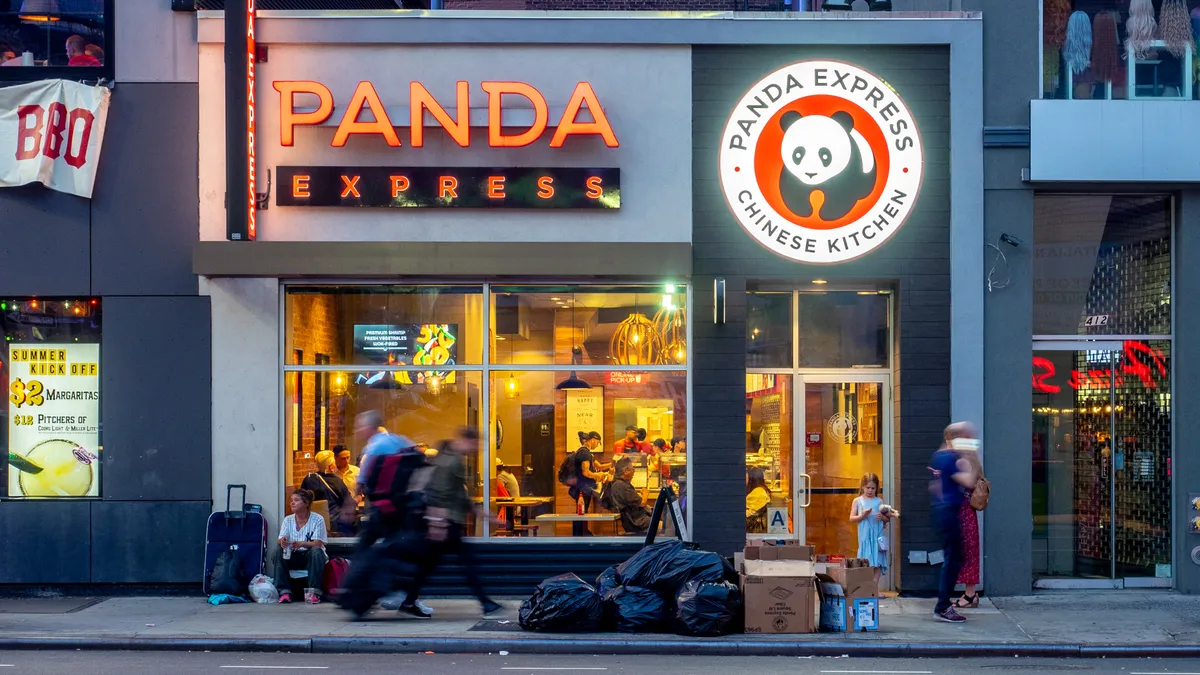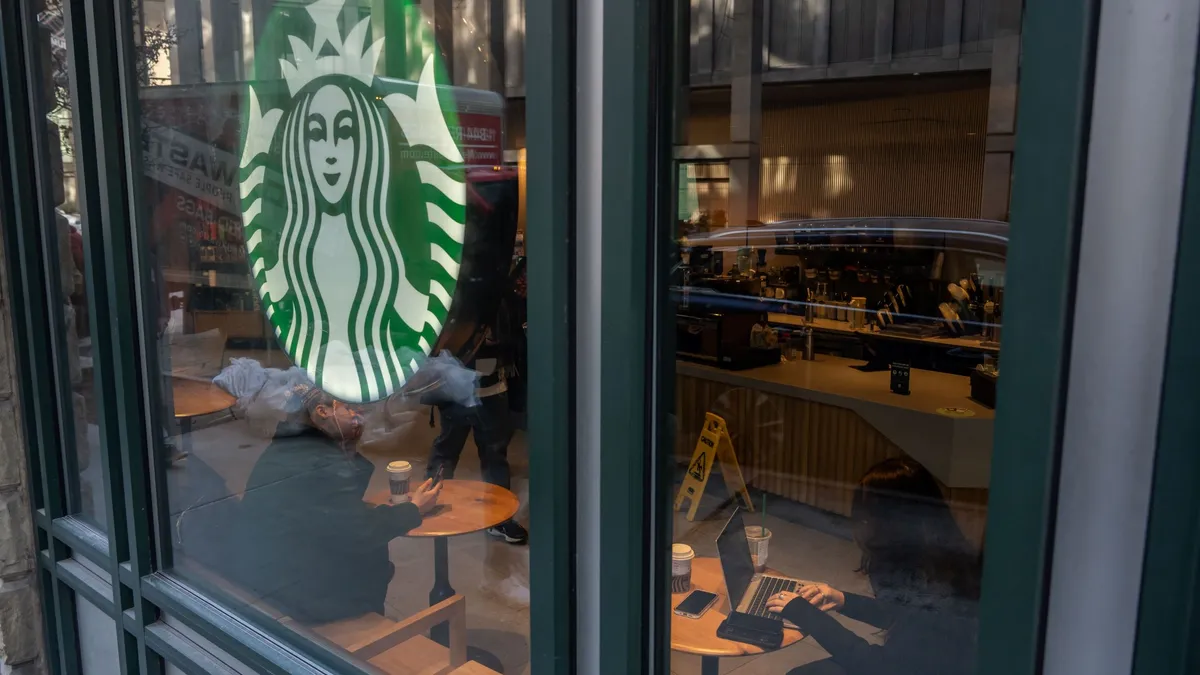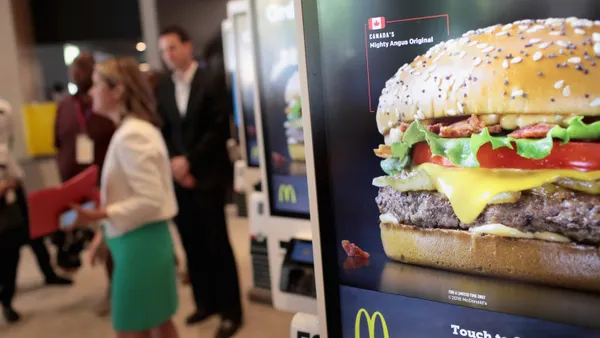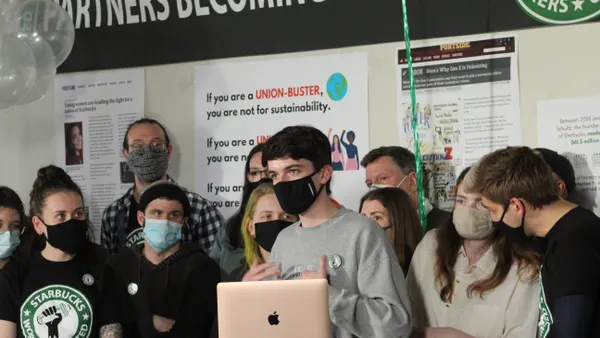It’s not often that a company with the global mass and financial power of McDonald’s comes to blows with an ex-CEO on the public stage.
The scandal took another twist yesterday when Bloomberg reported that ousted Steve Easterbrook may have covered up misconduct by other employees, citing an executive familiar with the matter. The company’s board is also working alongside outside counsel to examine how its HR department operates.
Former managers told The Wall Street Journal that under Easterbrook, HR heads turned a blind eye to complaints about leaders, and that some employees worried about retaliation if they brought information about executive behavior forward.
“The board will follow the facts wherever they may lead,” McDonald’s told Restaurant Dive in an emailed statement.
Regardless of whether the mega chain can claw back ousted Steve Easterbrook’s severance package — which has grown to a staggering estimated $57.3 million since his firing in October — what matters is what the chain does next, corporate ethics experts say.
“McDonald’s does not tolerate behavior from any employee that does not reflect our values. These actions reflect a continued demonstration of this commitment,” CEO Chris Kempczinski wrote in a letter to employees about the lawsuit on Aug. 10. “That includes working together to enhance our culture by continuing to do the things we do well while developing solutions for how we can improve.”
McDonald’s lawsuit places the onus on Easterbrook for allegedly failing to disclose the entire scope of his inappropriate behavior. The company claims it uncovered three additional sexual relationships Easterbrook had with female employees before his firing and that he tried to destroy records of this.
“The Board unanimously determined to take action equivalent to effectively terminating him for cause and send a clear signal to shareholders and the broader McDonald’s community that his misconduct, which clearly deviated from McDonald’s values, must not be ignored,” Rick Hernandez, chairman of McDonald’s Corporation, said in an emailed statement.
McDonald’s argues that Easterbrook’s “silence and lies” about these issues were a calculated play to exit the company in a more favorable light and with more money — while Easterbrook’s attorney claims the company’s clawback attempt is baseless because the additional allegations are “not new at all.”
Based on Easterbrook’s claims, it will be an uphill battle for the company to argue that the separation agreement should be undone, Matthew Nielsen, partner at global law firm Bracewell LLP, said.
As this lawsuit shakes out, the mega chain has an opportunity to bolster its corporate governance guidelines and values to make clear what employee behavior won’t be tolerated, Juliette Gust, co-founder of workplace misconduct reporting channel Ethics Suite, said. So far, Gust feels that the fast food giant has failed to give its internal standards teeth as sharp as its lawsuit language.
“There was no call to action in [Kempcinzski’s] letter. It basically said we’re gonna sue the former CEO, we found that there was misconduct that we didn’t have before, and that was it,” Gust said. “Which means they really missed an opportunity to say, ‘If there’s anything else, we want to hear about it and we want to hear about it now.’”
McDonald’s told the WSJ Tuesday that the chain has hired consultants to begin interviewing employees about their experiences at the company starting in September. McDonald’s executives told Restaurant Dive that Global Chief People Officer Heidi Capozzi has initiated surveys and listening sessions with employees to get feedback on blind spots related to company values and review how employee concerns are raised and investigated. The company also revamped its corporate values earlier this month.
Investigating CEO misconduct
Gust and other corporate ethics and legal experts find it strange that the company didn’t uncover dozens of sexually explicit photos and videos of female employees allegedly in Easterbook’s email until an anonymous tip surfaced nine months after the initial investigation.
“I think that makes very clear that their focus there was not in addressing harassment issues or misconduct, or effect on the shareholders or anything like that — their strategy was to make sure their stock recovered quickly,” Gust said.
“They really just completely failed to do a proper investigation, to do additional due diligence, to look into background and [not] to take the statements that the CEO made to them at face value without further investigation,” she added. “It’s really beyond comprehension why they wouldn’t have… been able to connect with their own or outside firm to do data preservation and discovery so they could find deleted emails, deleted pictures, deleted text messages and so on from all of his devices.”
Kempczinski praised the work of Capozzi for supporting stakeholders across the chain in the letter to employees, but did not mention U.S. Chief People Officer Melanie Steinbach. A week later, McDonald’s announced that Steinbach, who was promoted to the role in June, left the company.
“For a variety of reasons, and unfortunately I can’t comment on the specifics, we determined that her separation was really in the best interest of the company,” Capozzi said during an online meeting with employees, WSJ reports.
Pushing out an executive tasked with mediating employee grievances and investigating supervisor-employee disputes amid this tumult doesn’t look good, though McDonald’s has not commented on the impetus behind Steinbach’s departure and whether it is connected to the Easterbrook debacle.
Reports from WSJ today, however, point to greater turmoil in the HR department. Former McDonald’s managers told the publication Capozzi’s predecessor David Fairhurst, who Easterbrook appointed as global chief people officer after becoming CEO, altered performance review processes so that they “allowed for less employee feedback about concerns.” McDonald’s said he was fired with cause following an investigation into inappropriate behavior and favoritism within the HR department, but that his termination wasn’t connected to Easterbrook’s ouster. At the time of Fairhurst’s dismissal in November, McDonald’s simply said he left the company.
With Easterbrook’s termination, McDonald’s was quick to move after learning of his inappropriate relationship with a female subordinate last fall, and this expedient ouster may have caused crucial information to slip through the cracks during the company’s investigation, Nielsen said. However, if this is what occurred, he thinks it would be understandable.
“You’re talking about the chief executive officer of one of the most visible companies in the world… I can see where the company had the desire to, based on what it knew, go ahead and have an exit for the CEO and get new leadership in place,” he said. “When you have allegations against a CEO, it does create conflict for companies because to what extent do they allow that CEO to continue to operate in their position while they are doing an investigation?”
If McDonald’s were to perform a more widespread investigation of Easterbrook’s potential misconduct that he didn’t disclose, it would have taken significantly more time and created internal management issues, Nielsen said.
"When you have allegations against a CEO, it does create conflict for companies because to what extent do they allow that CEO to continue to operate in their position while they are doing an investigation?"

Matthew Nielsen
Partner, Bracewell LLP
“Usually what you see [in these situations] is that a company would say, ‘There may be more misconduct that we’re not aware of, but we’ve uncovered enough misconduct to warrant a termination,’” Nielsen said. “The unusual part here is that the company is looking to recoup money based upon similar misconduct that, presumptively, the company made an informed decision not to explore.”
It’s also rare for an executive’s misconduct to be limited to the events that are first reported, Nielsen said.
“[Misconduct] is usually not isolated to what is actually recorded,” Nielsen said. “More often than not we find a pattern of misconduct or the scope of it is more than what we’ve first learned.”
The professional isolation that comes with the C-suite has the power to amplify undesirable personality traits like narcissism and overconfidence, as well as isolation, Professor Robert Foehl, executive in residence for business law and ethics at Ohio University’s College of Business, said. Foehl has developed ethical guidelines for Target, where he served as director of corporate compliance and ethics.
“CEOs have enormous power and often enjoy celebrity-like status within their organizations and sometimes outside of their organizations,” Foehl said. “So they have to be ever vigilant to avoid unethical conduct, and this really requires a healthy amount of self-awareness.”
During Easterbrook’s tenure, he encouraged a party culture among top executives, and rumors of his misconduct swirled in the year prior to McDonald’s initial investigation, WSJ reports.
To minimize this kind of risk, Foehl said major corporations are increasingly separating the roles of chief executive and chairman of the board.
“[This] helps ensure that the CEO doesn’t have an inordinate amount of control over the board that hires the CEO, that adjusts CEO compensation, that essentially has employment power over the CEO,” he said. “The other part is ensuring that the company has… reporting processes to make sure that if CEO conduct is at issue, that those reports aren’t filtered through executive ranks and never make it to the board… and that those processes lead to impartial investigations.”
It’s likely that McDonald’s tried to settle Easterbrook’s alleged breach of his fiduciary duties privately before pushing the situation into the spotlight, Nielsen said.
“[The fact that] McDonald’s has chosen to enter this publicly means that its efforts to resolve it privately probably failed,” Nielsen said. “I would imagine it tried to keep this out of the media… We don’t know what those conversations were, but this is very unusual.”
Foehl thinks that McDonald’s decision to accuse Easterbrook of additional behavioral infractions publicly reflects a trend among major corporations to adopt zero-tolerance policies against these breaches of conduct.
“Increasingly, people are looking at the behavior of corporations and making decisions on whether they're going to [do] business with those corporations based on corporations meeting their ethical obligations to society,” he said. “People are probably looking at [McDonald’s] and saying, is it just [the CEO], or is it [systemic]?”
Training is 'meaningless' without consequences
Sexual harassment has certainly been a pattern at the Golden Arches — the company has been slapped with numerous store-level complaints over the years, as well as a $500 million class-action lawsuit claiming “severe pervasive sexual harassment” of female employees. The same week McDonald’s sued Easterbrook, three Teamster pension funds sued the restaurant for sexual harassment and gender discrimination that allegedly “persisted for at least a decade” at “all corporate levels, including within the company’s highest ranks.”
“McDonald’s suffers from a toxic work culture marked by sexual harassment, bullying, and abuse of the company’s female employees at the hands of their supervisors, co-workers, and customers,” the suit alleges.
In 2019, McDonald’s launched an anonymous sexual harassment hotline and mandatory sexual harrassment training for employees to curb this trend. But this training only applies to corporate-owned stores, which represent less than 5% of McDonald’s store footprint.
“Training is absolutely meaningless unless there’s consequences to violations of the policies that are set forth,” Gust said. “What we don’t see very much are consequences… we see a lot of hand-wringing… we see a lot of excuses.”
To establish tougher policies on sexual harassment and inappropriate work relationships from the C-suite to the store kitchen, McDonald’s needs to take a stronger approach in seeking compliance from franchisees, Gust said.
“[This] is a very unpopular thing to do because of the joint employer liability,” Gust said. “But, if any company has the power to effect some change, it would certainly be McDonald's.”
"Training is absolutely meaningless unless there’s consequences to violations of the policies that are set forth. What we don’t see very much are consequences… we see a lot of hand-wringing… we see a lot of excuses."

Juliette Gust
Co-founder, Ethics Suite
It’s important to keep in mind, Foehl said, that when a company employs roughly 2 million people across its network, including franchise locations — a population about the size of Houston — that it’s difficult to ensure ethical behavior across the board.
“Companies certainly aren’t perfect, and can’t always prevent ethical lapses from happening,” he said. “What’s important is taking a look at the response and saying, is this response appropriate… If you’re the public face of the company, maybe the consequences should be a little more dramatic than the consequences if you’re just a line worker at McDonald’s.”
McDonald’s response should aim to reduce the chances of a similar ethical lapse from recurring again, and should try to remedy any harm caused by Easterbrook’s unethical behavior, Foehl said.
“It’s important for companies to set the right tone at the top, and it’s important that the leaders of an organization are behaving in a way that comports with the ethics and compliance culture at that company,” Nielsen said.








